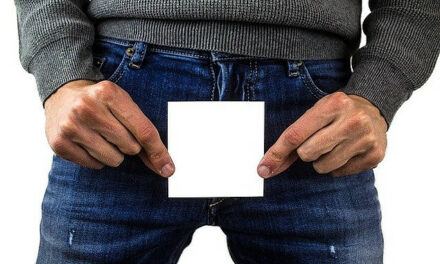We have a total of 24 vertebrae, starting from the neck, cervical spine, thoracic spine, the lumbar spine. These 3 sections of our ‘bony’ spine, together with the sacrum (sacral bone) and tailbone below the lumbar region, make up the spinal column.
The shock absorbers of your ‘bony’ spine are the spinal discs, also known as vertebral discs. They are located in between each vertebra.
Vertebral discs facilitate the movement of the spine. They also provide the space through the sides of the spinal column where the spinal nerves are passing from the spinal cord and travel to your lower extremities.
The spinal disc is made up of two parts. They are:
- The outer annulus fibrosis which is composed of rings of fibrocartilage which are densely packed to create a wall around the glycoprotein disc nucleus.
- The inner jelly-like glycoprotein is called ‘nucleus polyposis’ – It looks like the soft center of the chocolate.
As you move, the spine does move. The structures of the spinal disc allow the nucleus to move within the annulus, and ‘healthy’ spongy discs meant to adjust to the pressures placed on your spine.
A disc may bulge and push back into the spinal canal if it is damaged. The disc typically bulges toward only one side of the spinal canal, which may not or may result in pain.
If you experience pain due to a disc bulge, usually, the pain severity depends upon how prominent the bulging is.
In this article, I will be explaining more on bulging disc and touch on answers to ‘Can A Bulging Disc Heal On Its Own’.
Let’s start rolling…
What is a bulging disc?
A bulging disc is a condition in our spine that is prevalent as we age. It happens when the annulus structure is damaged or weakened which then allows the nucleus pulposus to move more than its normal position inside the disc pressing outwards on the deteriorated disc wall, causing the disc to bulge outwards.
When you have a disc bulge which presses against or irritates the nerve exits from the spine, that can cause back or leg pain.
This pain can appear in different forms such as spasms, numbness, cramping, pins and needles, or pain in your legs (with no to little back pain).
We have previously discussed causes for the upper and lower back pain. Similarly, we also learnt that the reasons for leg pain could depend on the exact location of the pain (for example, groin leg pain, thigh pain, knee pain, calf pain, foot pain or back of the leg pain) or pain association (for example, pain at night).
Tip: Note that a disc bulge and herniation are not really the same.
In a disc bulge, the outer layers of the disc annulus are still intact, and the nucleus of the disc is still contained within the disc. When the outer layers of the disc are damaged, and the nucleus within the disc escapes from the original disc form, then it is known as a herniated disc.
Tip: We discussed more on disc protrusion in a separate article.
How common is disc bulging?
Disc bulges are very common. And, in many cases, those bulging discs do not require any specific treatment. However, in exceptional cases, a bulged disc can lead to severe pain and interfere with your lifestyle, demanding professional therapies and even surgery.
Anyone can experience a disc bulge at any age; however, the bulging disc is more prevalent in older adults and those who are involved in energetic physical activity (for example, sportspeople and tradespeople) for more extended periods of time.
Causes of disc bulging
The leading reasons for a bulging disc are below.
Repetitive trauma
Repetitive trauma, for example, due to poor posture and repetitive heavy work can result in degeneration
of spinal disc leading to a bulging disc.
Most times, these long-term injuries are also linked with reduced muscle elasticity, obesity and other factors like smoking.
Poor posture stresses your spine. Constant slouching or forward bending of your spine overstretches and weakens the posterior fibrocartilage (or annulus) of the spinal discs. With time, this repetitive wrong ‘moves’ results in weaken disc health, which then leads to a displacement of the disc nucleus fluid towards your back of the spine. This adds pressure on to your spinal joints and nerve roots exiting the spinal cord, causing pain.
Tip: Everything about pressure on blood vessel walls are here.
Sudden trauma caused by an accident
A sudden force on the disc following a car accident or an unexpected load on the disc as a result of heavy lifting can injure the disc and cause damage and tears to the annulus.
Poor body tone and fitness
People with a lesser disc density due to increased elastin component of the fibrocartilaginous can promote a bulging disc because fibers are more susceptible to disc bulge.
Other factors that contribute to disc bulge are the nature of one’s job, weak lower limb muscle strength
and poor core stability.
Aging
Degeneration of the spine with aging is inevitable. Although aging contributes to spinal degeneration, poor spinal function and poor posture will speed up disc degeneration to a larger extent.
What are the symptoms of a bulging disc?
Interestingly, there is no particular symptom to suggest that you are experiencing a bulging disc.
Most people go on for years without showing any apparent symptoms, while a minority may experience extreme pains or life-threatening consequences.
Bulging disc is mostly a ‘silent’ condition because most times when a bulging disc has not reached above the threshold level of severity (which is the stage of herniation) for you to feel it, so one may experience little or no pain. This makes it even difficult for you to discover that you have a bulging disc before the condition becomes more severe.
When the condition becomes severe, the symptoms are usually similar to the symptoms of other spinal conditions like herniated disc, protruded disc or facet joint strain.
The utmost signs and symptoms associated with a disc bulge are below.
- Your back pain is aggravated by sitting, bending forward, lifting and coughing or sneezing.
- You may at first experience a sharp pain in the area of the affected disc, especially during movement.
For instance, tingling or pain in the fingers, hands, arms, shoulders or neck can indicate a bulging disc in the cervical (neck) area while suffering in the lower spine, feet, thighs and buttocks can be as a result of a bulging disc in the lumbar region. The aching can also extend across the area, and most of the times it is accompanied by muscular tightness.
- Bulging disc could cause bladder incontinence if the bulged disc compresses the nerve endings that stimulate the bladder function. In this case, seeking medical attention immediately is important.
- Upper back pain radiating to the stomach (epigastric region) or chest may be a symptom of a (heart attack as well as) a mid-spine bulging disc.
- Although in rare cases, symptoms like sciatica pain, where a dull pain to a sharp burning pain travels down trough one or both of your legs, which would also be associated with pins and needles, numbness and muscle weakness can occur.
Muscle spasms are another ‘odd’ symptom of a bulging disc.
These symptoms can occur if the bulging disc is severe and are usually associated with nerve compression or injury.
How is a bulging disc diagnosed?
A disc injury can be quickly diagnosed by using a combination of the following investigations.
An objective examination of the patient – for example, the history of your injury and the symptoms you have.
- The findings from your physical examination, X-rays, CT scans and MRI scans
It is essential to know that MRI may show that the patient has a bulging disc, but that does not prove that it is the cause of your pain because there are many patients with a bulging disc that do not experience pain.
How to manage disc bulging at home?
Some useful tips about bulging disc management to help you manage the symptoms at home are here.
- Change your sleeping, sitting and walking postures may help you to reduce the symptom severity if a bulging disc caused that.
- Weight losing exercises can help if the cause of the bulging disc is obesity.
- Nonsteroidal anti-inflammatory drugs (NSAID) like ibuprofen are helpful for pain management, but see doctors advice if you have other medical conditions.
- Use a heating pad, ice pad and massage therapy to reduce pain.
- Use of at-home traction devices can ease pressure on the nerve.
Tip: Diabetes-friendly exercises fit anyone interested in losing some weight to ease bulging-disc related pain.
What to do if you have a bulging disc?
Bulging disc is cautiously treated without the need for surgery if the injuries are minor or moderate.
If you have pains and suspects that that is it caused by a disc bulge, always see a doctor run an examination of your spine thoroughly to be sure that it is the cause of your pain, and your pain is not a kidney pain.
Once confirmed, it’s a bulging disc, start the treatment program and exercises prescribed for you as soon as possible.
The treatment of the bulging disc is focused on encouraging the fluid to return and remain in the center of the spinal disc. This is done so that the torn fibers are packed closer to one another and to keep the structure of the annulus as normal as possible.
The idea is to help the torn fibers of the annulus to heal and the disc bulge to be properly resolved.
(picture shows a spinal decompression procedure)
Bulging discs can be managed by using a combination of the following:
- Adhere to your physiotherapist’s advice on the best positions to stay in and the postures to avoid, which can delay your recovery and cause more damage.
- Your physiotherapist may tape or brace your spine.
- Take rest (and, while moving make sure to avoid aggravating activities which stress on your back)
Tip: Did you know stress symptoms in men can be different from women.
- Pain relief
- Protection to back
- Inflammation management.
The Pain is the main symptom that you developed when you have a disc bulge, and it is usually the main reason why you made a doctors visit. Saying so, a possible short-term reason why you suddenly developed bulging disc symptoms (i.e. pain) is inflammation of the disc. The best way to reduce such inflammation is by using ice therapy and techniques or exercises that relieve the inflamed structures.
Your physiotherapist may use one or a combination of the following strategies to reduce your pain and inflammation:
ice therapy,
massage electrotherapy,
acupuncture,
unloading taping techniques, and
temporary use of a back brace.
And, your doctor may recommend:
non-steroidal anti-inflammatory drugs like ibuprofen, or
give you Cortisone injections (known as epidural steroid injections, or ESI) in the spine to provide longer-term relief.
Tip: Our tips on finding a good doctor to treat diabetes contain some valuable hints on how to find any good doctor.
- Once the symptoms of the bulging disc improve, your physiotherapist will aim at restoring and then extending your joint alignment and motion range. Besides, they will focus on strengthening core muscles, increasing muscle elasticity, muscle length and resting tension, muscle strength and endurance, and most importantly prevent a recurrence of the back pain.
The Physiotherapist may recommend that you change some aspect of your lifestyle to stay healthy like improving your lifestyle, your posture or workplace or engaging in exercise that can help you stay healthy.
- You are strongly advised to continue the weekly routine exercises recommended by your physiotherapist because exercise is a critical component to prevent the recurrence of back pain successfully. Your physiotherapist may recommend going to the gym, swimming, Pilates, yoga and hydrotherapy to help.
Can a bulging disc heal on its own?
If you don’t seek professional treatment for your bulging disc, it will try to heal on it own naturally. But, professional care can help to fast-track your recovery and prevent the possible complication of a bulging disc (for example, bladder prolapse).
Also, most mild bulging discs can heal naturally and without treatment, and most of them do not show any symptoms
Tip: Spinal discs can prolapse too.
How long does a bulging disc take to heal?
Most bulging disc injuries respond well to a combination of specific treatments options for treating the problems that have to do with the function of the spine and spinal exercises.
The first treatment is given once it is apparent that disc strains or tears, to help relieve the pain and so you can continue with your life again as soon as possible. Typically, these injuries take a few weeks for the symptoms to settle down ultimately.
The average time it takes for tears in the annulus to heal is about 6 weeks, but it can take a longer time in some cases.
Always have it in mind that as the torn fibers are healing the disc is still weak and is vulnerable to re-injury. Unfortunately, once a disc is damaged, it can never (go back) improve to its original strength; therefore, there will always be some degree of disc weakness.
What should I avoid with a bulging disc for it to heal fast?
Here are some tips to help speed-up the reversing of a bulged disc.
- In the first 48-72 hours after injury, avoid heat and heat rubs.
- Avoid total bed rest because it (being completely passive) has been proven to prolong the recovery.
- Avoid sitting on soft chairs that put pressure on the low back
- Avoid standing or sitting for long periods.
- Avoid slouching or poor posture.
Tip: If you decide to take rest to help a bulging disc or related pain, consider body pressure-relieving devices such as heal protectors.
Tip: If you use a wheelchair, stick with a good cushion. We have previously noted our opinion about Roho cushions.
Signs of a bulging disc not healing by its own
A bulging disc usually heals on their own after a few weeks to a month. But when the buying disc is not healing as it should, the symptoms will persist for months and becomes chronic, and eventually require you to seek professional help.
What happens if a bulging disc goes untreated?
An untreated ignored disc bulge can either improve on its own or can get worse complicating to a herniated disc and in very severe case it can lead to permanent nerve damage and can cut off nerve impulses at the base of the spinal cord in your lower back and legs in very rare cases. When this happens, one may have to lose bowel or bladder control issues, which are considered health emergencies.
Saddle anesthesia is another complication that can result from an untreated disc bulge. This is the situation where the bulging disc compresses nerves and result in losing sensation in your inner thighs, around your rectum and the back of your legs.
When to seek help
It is advisable to seek medical attention help if you or your loved one experience any of the following:
1. Loss of bladder or bowel function.
When the bulges are serious, it can affect the nerve control involving your bladder or bowels so you can experience lose bowel or bladder control. If this happens, that is a medical emergency, and you may require surgery.
2. Weakness in your muscles.
See your doctor immediately If you experience weakness of the arm, hand, leg or foot.
3. Sensation issues
Seek for medical assistance if you experience reduced sensation, numbness or sensations of being pricked with pins and needles.
4. Sciatica or brachialgia
See a medical practitioner if you experience sciatica
(pain on your leg) or brachialgia
(pain on your arms)
5. Severe back pain
For example, if you experience spinal pain.
Conclusion
Bulging disc is a medical condition that can affect both the young and elderly, although it is more common in the elderly. It is due to the change in the shape and position of the spinal disc, which can happen when a spinal disc slips out-of-place due to excessive stress on a disc. If ignored, the condition can progress to a herniated disc.
Most times when one develops a bulging disc, there will be no symptoms, and the only way to identify it early is through scans (X-ray, Ultrasound, CT or MRI) and medical testing that show changes in the shape and position of the disc. However, some people may show symptoms like different sensations ranging from pains to tingling sensations before a bulging disc advanced to a herniation.
Detecting bulging disc early means it will be simpler to treatments and prevent the condition from getting worse.
Bulging disc can heal on its own or get worse if left untreated. There are some at-home management strategies (as noted above), from physical therapy to core strengthening exercises can help treat a bulging disc. However, remember, in severe cases, surgery may be required.
Tip: Massagers like the Thumper, sequential leg compression, and Quell pain reliever could come handy in suppressing the pain.
Tip: Infrared heating mats may help to improve your symptoms and progress of the recovery from a bulging disc.
Tip: Sliding bench with a swivel seat can help you get into a tub safely.











0 Comments